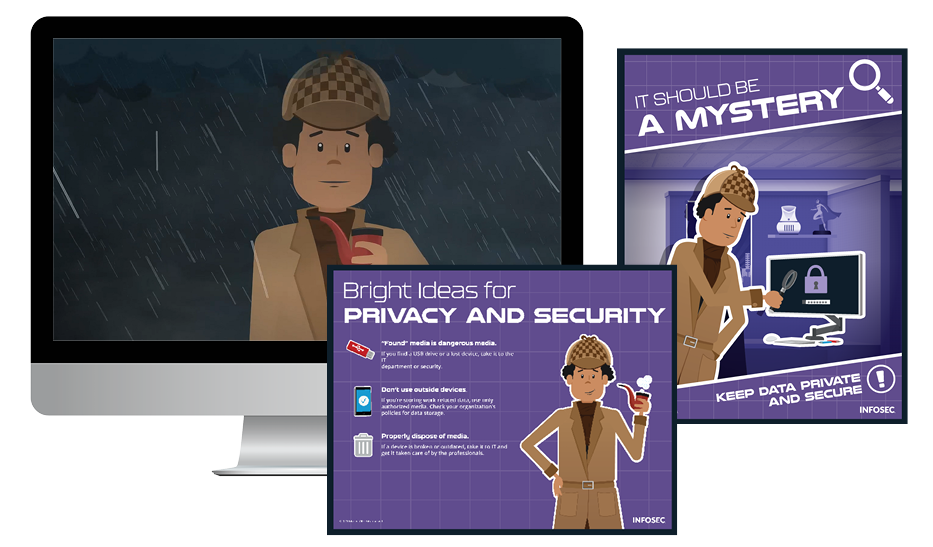Security awareness for kids: Tips for safe internet use
The internet is integral to a child's life in schools, at home and wherever they spend their free time. Devices that connect to the internet can benefit learning, enhance social relations and keep young children connected to their loved ones — but they can also be a source of danger and concern for parents and educators.
It is important to protect children from the everyday dangers of inappropriate conduct, content and contact they may encounter online. But what is the right age to introduce key security awareness concepts?
It should start whenever a child begins spending time online, even when supervised. That’s a fairly young age for most children. By eight years old, children average four to six hours per day watching or using screens. By the time they are teenagers, more than half spend at least four a day just using social media.
Introducing security awareness in children
The first security educators are likely parents or guardians, as they tend to be the ones who introduce children to the online world. Once they are in school, educators are also responsible, particularly as more curriculum moves online and devices like iPads are integrated into students' everyday learning.
Two year's worth of NIST-aligned training
Deliver a comprehensive security awareness program using this series' 1- or 2-year program plans.
However, not every adult is an expert in security awareness — or even the basics. So, where should you start? As Infosec’s Keatron Evans outlines in the video above, it can be helpful to think in terms of age groups:
- Cybersecurity for grade school: As kids go online, focus on creating a foundation of good habits. These include not sharing personal information, never clicking on unknown links and only downloading apps from official stores. Guardians can also help ensure that the highest privacy and security settings are enabled, and they can monitor activity for any teachable moments.
- Cybersecurity for middle school: As children access more devices for learning and fun, they must take more ownership of their security. This includes concepts like separating school and personal accounts, as well as email safety and other forms of phishing. Fraudsters prey on children by building curiosity through emails and other messages that entice them to click, install and share information that they shouldn’t.
- Cybersecurity for teens: Social media poses its own dangers for teenagers, from oversharing personal information to new avenues for cybercriminals to contact them directly. Help ensure teenagers are aware of the different privacy settings available. They should also avoid using the same login credentials for each site and set up multi-factor authentication on all accounts, when possible.
Parents’ role in security awareness
As a parent, you’re not alone in teaching your kids good security habits. There are a growing number of great resources you can use to educate your children — and yourself. Many have been featured on Infosec’s Cyber Work Podcast and YouTube channel.
- Curtis Brazzell created a cybersecurity ABC book for children, M is for Malware
- Patrick Craven uses the persuasive power of Garfield to teach children (and others) how to be safe on the internet
- Infosec regularly creates short educational videos like Hacker Headlines and other videos to introduce cybersecurity careers to people of all ages
Most apps also have some level of parental control. This can be very effective for young children who need closer monitoring. However, older children who are technically savvy may be able to bypass such controls or have access to devices beyond those they own. As children grow older, critical thinking and a healthy foundation of behavior are most important to help them navigate the many online security threats they’ll be exposed to.
Also, children will often mimic the behavior of others in the household, so it’s important to model good security behaviors as well.
Educator’s role in security awareness
Educators also play an essential role in helping children stay cyber secure. As technology is integrated into the classroom, the education system must ensure everyone knows how to use that technology securely.
Get six free posters
Reinforce cybersecurity best practices with six eye-catching posters found in our free poster kit from our award-winning series, Work Bytes.
Eight K-12 school districts nationwide were affected by major cyber incidents this past year, resulting in four canceling classes or temporarily shutting down. Security awareness education is integral not just for students but also for teachers and staff.
Infosec created a Security Awareness Toolkit for Educators to help launch a program that can easily be integrated into an academic calendar. It includes:
- An educational video
- Shareable infographics covering key awareness topics
- Posters on topics like password security, social engineering, social media and more
- 1-year sample program plan
Importance of security awareness for children
Both parents and educators have a crucial role to play in keeping children safe online and instilling good cybersecurity practices.
Parental control software and close supervision can help children avoid many issues while they are young, but long-term success will be determined by giving each child the skills and resources needed to stay safe in the digital world.
Security awareness for kids helps instill those best practices — and helps them take ownership of their online privacy and security.
For more free resources, check out Infosec’s Security Awareness and Training Resource Center.



